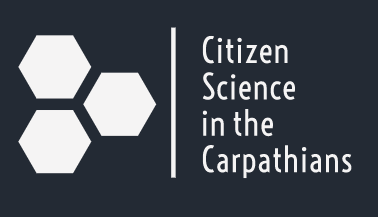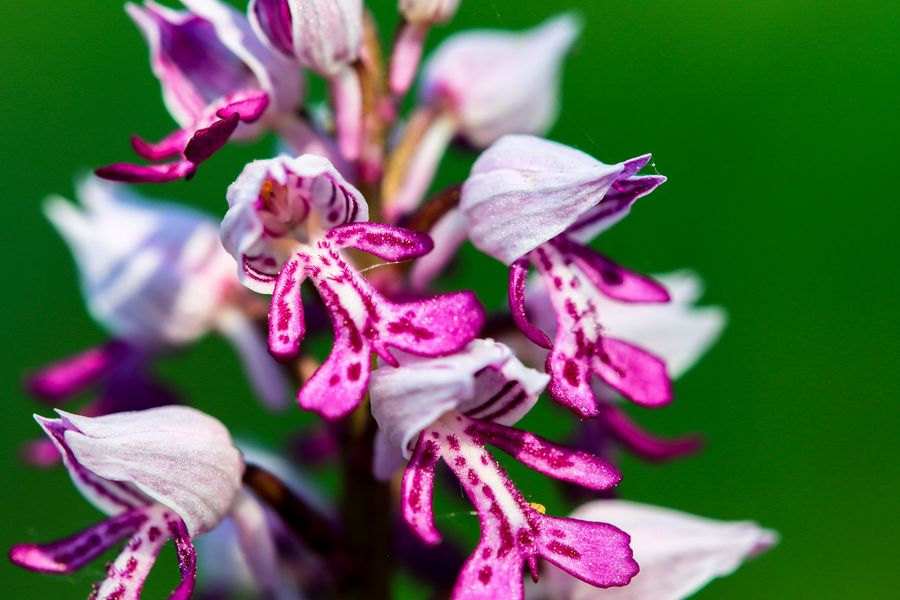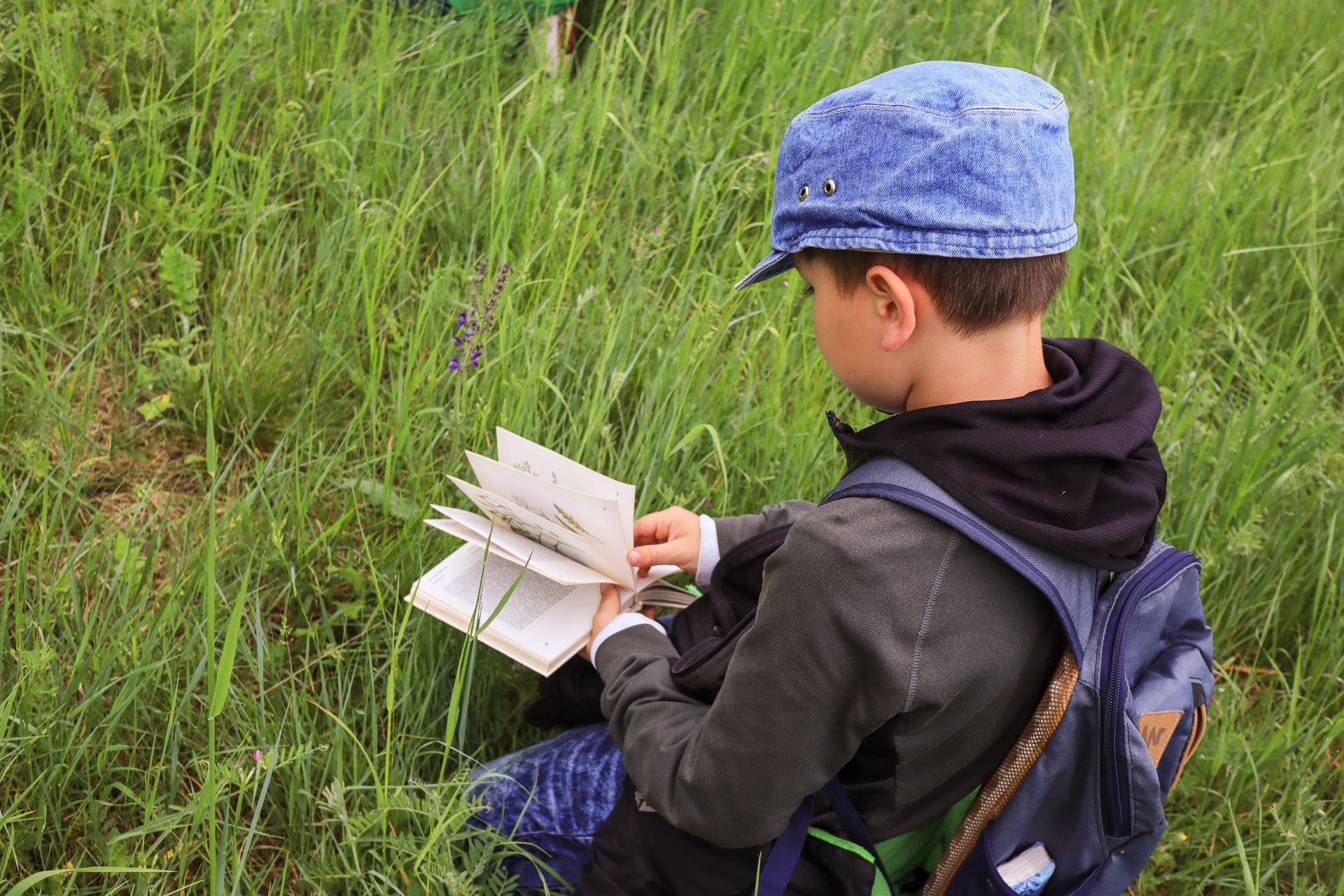Meet the Carpathian Nature.
The Bioblitz weekend. V4, 13-15 May 2022
From 13 May to 15 May 2022, researchers, school groups, citizens, wildlife enthusiasts, farmers, and others across the Carpathians could come together to help document the incredible biodiversity of Carpathian protected areas within the first BioBlitz event called Meet the Carpathian Nature.
What about becoming a scientist, the citizen scientist, and learning what grows and lives around us? From 13 May to 15 May 2022, researchers, school groups, citizens, wildlife enthusiasts, farmers, and others across the Carpathians could come together to help document the incredible biodiversity of Carpathian protected areas within the first BioBlitz event called Meet the Carpathian Nature.
This kind of event involves searching and identifying as many species as possible in a given location in a short period. Thanks to the public effort to inventorizing the biodiversity of a place with the help of researchers, the BioBlitz event helps to bring people closer to the nature that surrounds them and makes practical observations for science and conservation.
Even in this initial year, we recorded an appreciated interest of the public, protected areas managers, and NGOs. One hundred volunteers made nearly one thousand observations of common, endangered, and invasive species in twenty-four protected areas across the Carpathians, among which stood out, especially the observations of plants and invertebrates. And many more enthusiasts joined excursions organized in particular countries.
We are already looking forward to future years when we want to continue with organizing the BioBlitzes.
Meet the Carpathian Nature was organized by Tomas Bata University with the close cooperation of partner institutions from all V4 countries within Visegrad Grant. For more information, please visit the project website https://carpathians.citizenscience.cz/ and for the event results, visit: https://www.inaturalist.org/projects/meet-the-carpathian-nature-2022-bioblitz-weekend
Online symposium, March 16, 9:00-12:30 CET
CITIZEN SCIENCE: How to engage stakeholders in conservation

Thank all speakers and attendees for joining us at the online symposium!
The symposium was dedicated to adopting citizen science as an innovative tool for communication among protected areas managers and local communities and stakeholders.
Zuzana Okániková (ProNatur NGO) launched the event with general „philosophical“ questions about nature protection and communication and then brought the examples in Slovakia regarding communication (stakeholders involvement, education, and ecotourism).
Monika Ochwat-Marcinkiewicz (Ekopsychology Society) introduced the outputs of the CentralParks project (Interreg Central Europe), focusing on effective communication of biodiversity conservation and sustainable development. And also explained the process and results of pilot action aiming to raise the capacities, knowledge, and skills of Carpathian protected are managers for effective communication with their local communities and stakeholders.
Tamara Mitrofanenko (UNEP) introduced the current state and challenges of the recently emerging Carpathian ESD network. This ESD shall
- bring together Carpathian ESD experts on a longer-term basis,
- integrate the ESD Expert Network into the Carpathian Convention
- strengthen science-policy-practice interface in the field of ESD in the Carpathians
Jiří lehejček (IFOAM) focused on strengthening rural resilience by empowering local stakeholders and landowners by raising their responsibility for land management to enhance landscape resilience in climate change.
In the second part of the symposium, Jakub Trojan (Institute of Geonics, CAS) opened the door to Citizen Science, revealed its power, opportunities, and challenges in various research disciplines, and introduced the Czech citizen science network (www.citizenscience.cz)
Daniel Dörler (BOKU) introduced the Austrian network of citizen science projects (www.citizen-science.at) and focused on three best practices:
- Alpenverein from young to old – observing and documenting the distribution of 20 alpine plant and animal species – in cooperation with adult and kid hikers
- Biodiversity monitoring by farmers – inspiring farmers for animals and plants on their meadows and protecting these species through adapted management
- Butterfly monitoring raises awareness for biodiversity and encourages the maintenance of habitats, especially grassland ecosystems within the cultural landscape.
Miklós Bán described the OpenBioMaps project that provides a stable background for open and accessible biological databases, specifically for scientists and conservationists. Its customizable toolset facilitates easy access and management of data (openbiomaps.org).
Matyáš Adam (Tomas Bata University) introduced the other platform for biological data collection, iNaturalist, – a joint initiative by the California Academy of Sciences and the National Geographic Society. He proposed a high potential of this application in biodiversity monitoring throughout the world. In final, Matyas invited the attendees to join the weekend bioblitz Meet the Carpathian Nature, which will take place on May 13-15, 2022, in Carpathian protected areas.
Symposium program
Importance of communication between PA managers and local stakeholders – Case studies from Poland and Slovakia – Monika Ochwat – Marcinkiewicz (Ekopsychology Society) & Zuzana Okániková (PRONATUR NGO)
Agricultural landscape as an opportunity to face environmental challenges – owner, farmer, and stakeholder point of view – Jiří Lehejček (IFOAM)
ESD network as a potential way to bridge science, policy and practice in the Carpathians – Tamara Mitrofanenko (United Nations Environment Programme)
Power of Citizen science – Jakub Trojan (Institute of Geonics, The Czech Academy of Science)
Citizen Science as a tool for biodiversity monitoring and communication – Daniel Dörler (BOKU)
Data Management System for citizen science projects – Open BioMaps case study – Miklós Bán (University of Debrecén)
Alternative platforms for citizen science data collection + invitation to Carpathian BioBlitz – Matyáš Adam (Tomas Bata University in Zlín)
Online symposium, March 16, 9:00-12:30 CET
CITIZEN SCIENCE: How to engage stakeholders in conservation

Thank all speakers and attendees for joining us at the online symposium!
The symposium was dedicated to adopting citizen science as an innovative tool for communication among protected areas managers and local communities and stakeholders.
Zuzana Okániková (ProNatur NGO) launched the event with general „philosophical“ questions about nature protection and communication and then brought the examples in Slovakia regarding communication (stakeholders involvement, education, and ecotourism).
Monika Ochwat-Marcinkiewicz (Ekopsychology Society) introduced the outputs of the CentralParks project (Interreg Central Europe), focusing on effective communication of biodiversity conservation and sustainable development. And also explained the process and results of pilot action aiming to raise the capacities, knowledge, and skills of Carpathian protected are managers for effective communication with their local communities and stakeholders.
Tamara Mitrofanenko (UNEP) introduced the current state and challenges of the recently emerging Carpathian ESD network. This ESD shall
- bring together Carpathian ESD experts on a longer-term basis,
- integrate the ESD Expert Network into the Carpathian Convention
- strengthen science-policy-practice interface in the field of ESD in the Carpathians
Jiří lehejček (IFOAM) focused on strengthening rural resilience by empowering local stakeholders and landowners by raising their responsibility for land management to enhance landscape resilience in climate change.
In the second part of the symposium, Jakub Trojan (Institute of Geonics, CAS) opened the door to Citizen Science, revealed its power, opportunities, and challenges in various research disciplines, and introduced the Czech citizen science network (www.citizenscience.cz)
Daniel Dörler (BOKU) introduced the Austrian network of citizen science projects (www.citizen-science.at) and focused on three best practices:
- Alpenverein from young to old – observing and documenting the distribution of 20 alpine plant and animal species – in cooperation with adult and kid hikers
- Biodiversity monitoring by farmers – inspiring farmers for animals and plants on their meadows and protecting these species through adapted management
- Butterfly monitoring raises awareness for biodiversity and encourages the maintenance of habitats, especially grassland ecosystems within the cultural landscape.
Miklós Bán described the OpenBioMaps project that provides a stable background for open and accessible biological databases, specifically for scientists and conservationists. Its customizable toolset facilitates easy access and management of data (openbiomaps.org).
Matyáš Adam (Tomas Bata University) introduced the other platform for biological data collection, iNaturalist, – a joint initiative by the California Academy of Sciences and the National Geographic Society. He proposed a high potential of this application in biodiversity monitoring throughout the world. In final, Matyas invited the attendees to join the weekend bioblitz Meet the Carpathian Nature, which will take place on May 13-15, 2022, in Carpathian protected areas.
Symposium program
Importance of communication between PA managers and local stakeholders – Case studies from Poland and Slovakia – Monika Ochwat – Marcinkiewicz (Ekopsychology Society) & Zuzana Okániková (PRONATUR NGO)
Agricultural landscape as an opportunity to face environmental challenges – owner, farmer, and stakeholder point of view – Jiří Lehejček (IFOAM)
ESD network as a potential way to bridge science, policy and practice in the Carpathians – Tamara Mitrofanenko (United Nations Environment Programme)
Power of Citizen science – Jakub Trojan (Institute of Geonics, The Czech Academy of Science)
Citizen Science as a tool for biodiversity monitoring and communication – Daniel Dörler (BOKU)
Data Management System for citizen science projects – Open BioMaps case study – Miklós Bán (University of Debrecén)
Alternative platforms for citizen science data collection + invitation to Carpathian BioBlitz – Matyáš Adam (Tomas Bata University in Zlín)
Living Lab of Citizen Science
Workshop and meeting in NP Hortobágy, Hungary, 20-22 October 2021
The second physical meeting and workshop under the Visegrad Grant project Citizen Science in the Carpathians was organized by the IDEAS Science, Ltd. And OpenBiomaps on 20-22 October 2021. 17 attendees were present in-person and 4 online.
The workshop dedicated to Living Lab of Citizen Science was opened and moderated by Miklós Bán on behalf of the OpenBioMaps platform. He explained to the attendees the aim and process of a 3-day workshop.
Matyáš Adam, on behalf of Tomas Bata University, brought the first presentation outlining the scope and aims of the Visegrad project and the importance of sharing the best practices among citizen science projects and opened the topic of the Living Lab process.
Atilla Marton brought the second presentation on behalf of the University of Debrecén. He showed the methodology, results, and impact of the citizen science project Bird Atlas of Debrecén as one of the best practices in communication with the public and volunteers within the scientific project. After these presentations within “Science Dinner,” the discussion about choosing working groups and co-design citizen science projects was launched.
The second day started with introduction word of Gabor Tihanyi from Hortobágy National Park Directorate and two presentations of citizen science best practices. The presenters were online: Sven Schade showed the policy and organization background of citizen science from the perspective of the European Commission, then Attila Szantner presented the successes of the Massively Multiplayer Online Science approach and how, when, and why to use gamification in citizen science.
After a wide scale of questions and answers, Györgyi Bela and Miklós Bán presented the aims of workshop sessions and the content of activities of working groups. Considering all previous presentations, debates, and own experience, the attendees agreed on co-designing a national citizen science project on monitoring and managing invasive alien species since such a general project is lacking on a national scale in Hungary. Then attendees were divided into three working groups – communication/motivation, methodology/technology, scientific approach aiming to bring together experience and knowledge build first stones to the project.
The results of fruitful brainstorming brought within working groups were put together to pre-consensus how to co-design an example national citizen science project and what practical tools and methods might be used. This experimental, explorative workshop launched close cooperation among particular institutions aiming to boost citizen science in Hungary and the other V4 countries. On this basis, Miklós Bán prepared and shared the working document with the attendees. This should serve as a living citizen science working group.
The part of the workshop running with online presenters was organized in a hybrid form via Zoom.
Citizen Science as an innovative tool in conservation communication
Workshop and meeting in Nová Lhota, Czechia, 17-18 September 2021
The first physical meeting and workshop under the Visegrad Grant project Citizen Science in the Carpathians was organized by the Faculty of Logistics and Crisis Management, Tomas Bata University in Zlín on 17-18 September 2021. 11 attendees were present in-person and 7 online.
The symposium and workshop followed up on annual Round tables of stakeholders of the Carpathian Convention, which was organized by the Ministry of Environment of Czech Republic and Vzdělávací a informační středisko Bílé Karpaty. Within these roundtables, Matyáš Adam, as a Visegrad project coordinator on behalf of Tomas Bata University, presented Citizen Science in sustainable tourism and invited the attendees to the Citizen Science symposium and workshop the next day.
The symposium dedicated to Citizen Science as a tool for public engagement in conservation was opened and moderated by Matyáš Adam on behalf of Tomas Bata University in Zlín. He explained to the attendees the background and aim of the project and outlined the importance of using Citizen Science in communication in conservation.
Jakub Trojan brought the first symposium presentation on behalf of the Czech Academy of Sciences and Tomas Bata University as an expert in Citizen Science methodology and ontology. He covered a broad topic of crucial principles, methods, and tools used in citizen science projects with various specializations and showed best practices from Czechia and other countries.
Miklós Bán brought the second presentation on behalf of the University of Debrecén and OpenBioMaps platform as its founder. He explained the reasons and factors, why and when to use Citizen Science databases. In the case of OpenBioMaps, he showed practical hints and the infrastructure of Citizen Science in Hungary.
The third presentation was dedicated to the aims and activities of the Carpathian Scientific Council in Poland. This presentation raised a rich discussion about ways to implement Citizen Science to Council activities and platform Science for the Carpathians.
Fruitful panel discussion on practical hints and adoption of CS tools and methods to activities of not only protected areas was followed by a workshop session.
Within the workshop, Miklós Bán presented a step-by-step manual how to create own Citizen Science project on the OpenBioMaps platform, and Matyáš Adam guided attendees through creating and managing own Citizen Science project on iNaturalist platform.
The next day attendees joined the field excursion to try to use both platforms for biological data collection under the guidance of Miklós Bán and Matyáš Adam.
Matyáš Adam invited the attendees to the next meeting and workshop, which will take place in Hortobágy NP, Hungary, on 20-22 October 2021. Györgyi Bela reminded that within the workshop, the attendees would focus on motivational, communicational, methodological, and scientific aspects of citizen science and its usage in cooperation among local stakeholders and project management.
The entire symposium and workshop was recorded via Zoom.





















